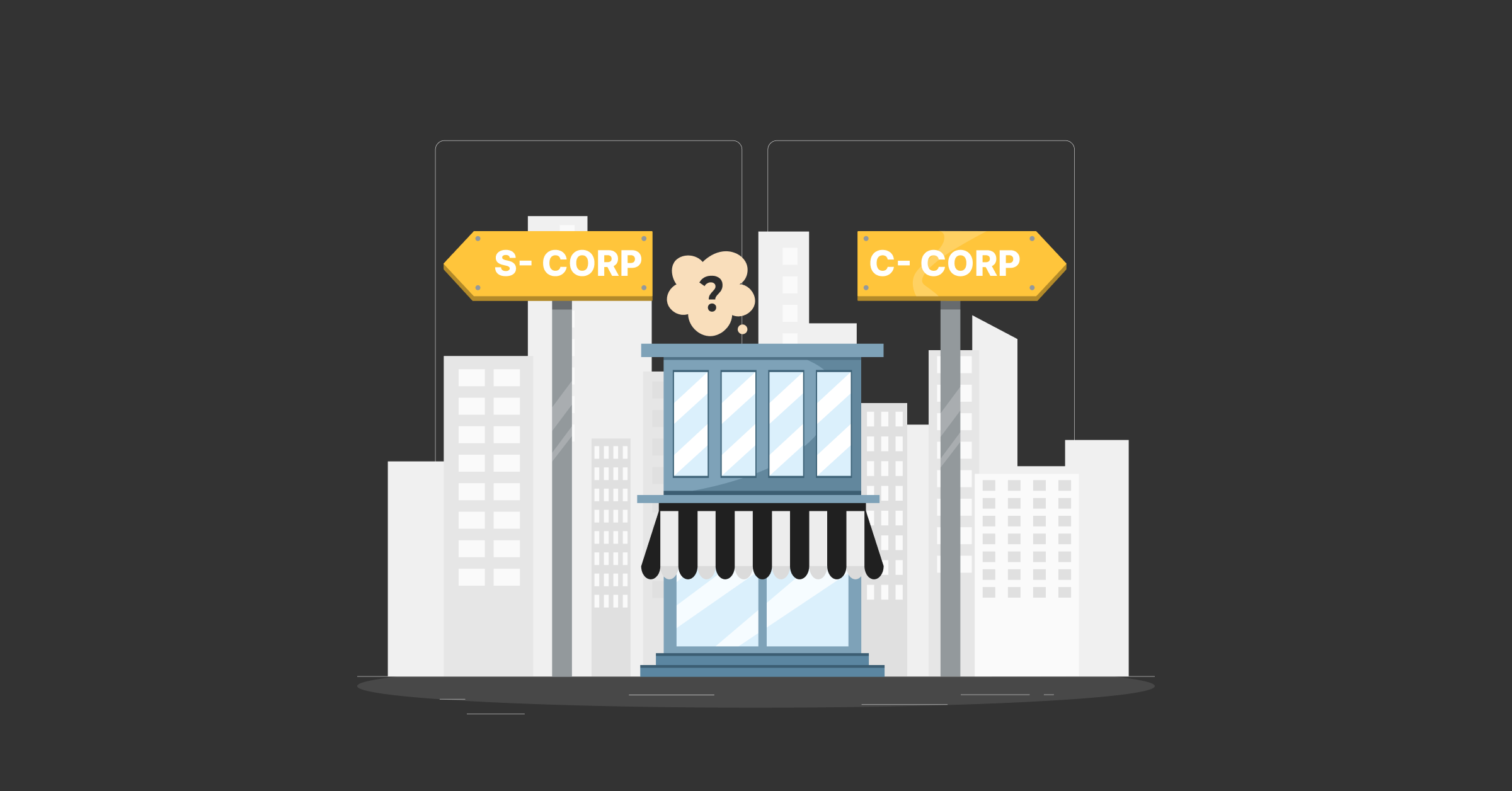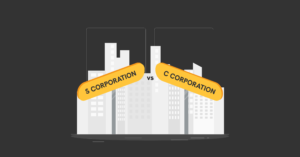Choosing an entity structure that makes the most sense for your small business is a difficult decision. There is an array of options, from different kinds of partnerships to corporations, that all offer their own advantages. Two popular business structures are C corporations and S corporations.
For small business owners struggling to decide on an entity structure, we’ll discuss the differences between C Corporations and S Corporations so you can decide whether either is the best option for your business.
What is a C Corporation
A C corporation or C-Corp is the entity structure most people commonly just call a corporation. It’s a separate legal entity in which the owners are considered shareholders.
To raise capital, the corporation issues share of stock in the company. The shareholders elect the board of directors, who make high-level decisions regarding the corporation and its affairs. Corporations often also have people who run the business’s day-to-day operations, like a chief executive officer (CEO) and chief financial officer (CFO).
What is an S Corporation
A S corporation is not a legal entity like a C corporation. It’s a tax designation that LLCs or corporations can elect to make to receive the tax advantages the designation offers. This means that you must either form an LLC or a corporation before you can elect for S corporation status.
Like C-Corp, an S-Corp has shareholders who own the corporation. They also have individuals who manage the operations of the business.
So, C-Corp vs. S-Corp. What are the differences? Let’s take a closer look at the factors that differ between these two entity structures.
Taxation
A C corporation is taxed as a separate entity. This means the corporation pays income tax on the business’s taxable income at the corporate income tax rate. One C-Corp tax advantage is that the corporation tax rate is a flat 21%, which is lower than the current highest individual income tax rate of 37%.
When the corporation distributes dividends to shareholders, those dividends are then considered taxable income to the shareholders who receive them. Accordingly, they are taxed twice- once at the corporate level and again at the shareholder level.
As a small business owner, you’re most likely performing services for your corporation. In this case, the corporation pays you a salary, which you then pay individual income tax on as a normal employee. The corporation can then deduct the cost of your salary along with the applicable payroll taxes as an expense against income.
The double taxation aspect of C corporations can be a major tax disadvantage for small businesses. You pay yourself a dividend to take money out of the corporation in addition to your salary. The dividend is money the corporation has already paid taxes on, which is then taxed again on your individual tax return.
A S corporation, on the other hand, is not taxed at the entity level. It is considered a pass-through entity, meaning the business’s net income is taxed at the shareholder level. As an individual shareholder, the net income from S-Corp is reported to you based on your applicable ownership share, which you then report on your individual tax return. You pay tax on the net income at your individual tax rate. Unlike partnerships and other pass-through entities, though, net income from an S Corporation is not subject to self-employment tax.
One of the requirements of an S Corporation is that owners must take a reasonable salary. The salary you pay yourself as an owner is subject to the applicable Social Security and Medicare tax. Accordingly, you are only paying these taxes on your reasonable salary.
Only paying Social Security and Medicare taxes on a reasonable salary and not the entire net income from the business is an S-Corp tax advantage that sways many businesses to elect S-Corp status. Additionally, if the business activity results in an overall loss, that loss may be able to offset other income on your individual tax return.
Ownership
As we alluded to in the previous section, there are requirements for electing S-Corp status. One of those requirements is who can be a shareholder, along with the number of shareholders. S-Corps can have no more than 100 shareholders, and shareholders must be U.S. citizens or residents, as well as certain trusts and estates.
C-Corporations, however, have no restrictions regarding the number of shareholders or who can be a shareholder. If your small business grows rapidly, you may not be able to fulfill the S corporation requirements, making a C corporation a more attractive option.
Stock
Like the restrictions on shareholders, S corporations have rules regarding the class of stock they can issue. S corporations can only issue one class of stock.
On the other hand, C corporations do not have any restrictions on the classes of stock they can offer. Generally, C-Corps offer two classes of stock, preferred and common stock. Common stock often comes with certain voting rights, and preferred stock may have priority over the company’s income.
If you are trying to attract certain investors to your business, offering different types of stock can come as an advantage. Some investors may prefer the privileges one class of stock has over another, which is not a possibility with an S-Corp.
Which One Should Your Small Business Choose: C-Corp or S-Corp?
Both C corporations and S corporations offer advantages and disadvantages for small businesses. Selecting the one that is the best fit for your company requires reviewing each option and deciding based on your business’s unique circumstances.
How X.tax Can Help
Once you’ve selected the entity structure for your small business, whether it is a C-Corp or an S-Corp, you’ll need to file business tax returns each year. X.tax offers a streamlined process for filing your business tax returns in a matter of minutes and not hours, saving you both time and a headache.
The deadline for the 2024 tax returns is only a few months away, so don’t delay. Contact X.tax today to see how we can help your small business.









